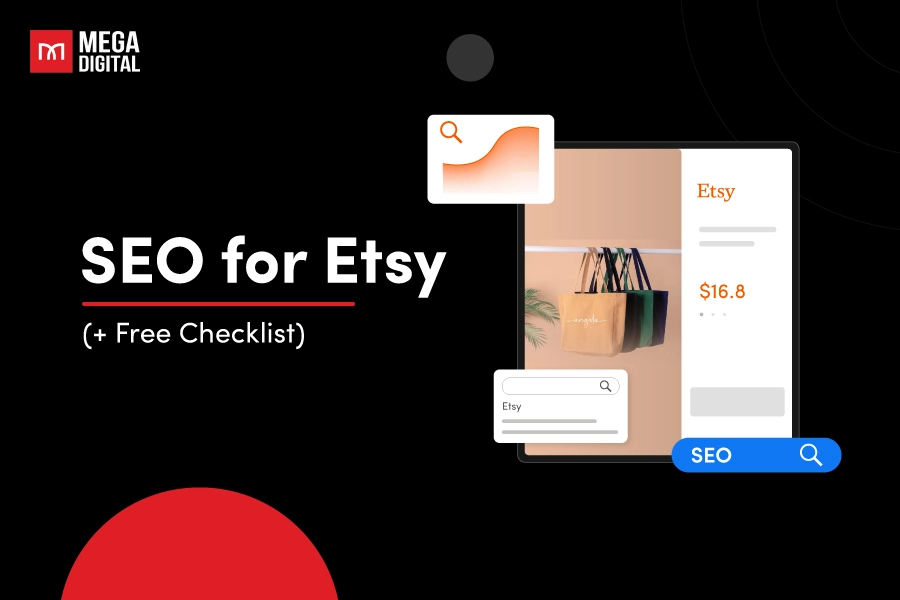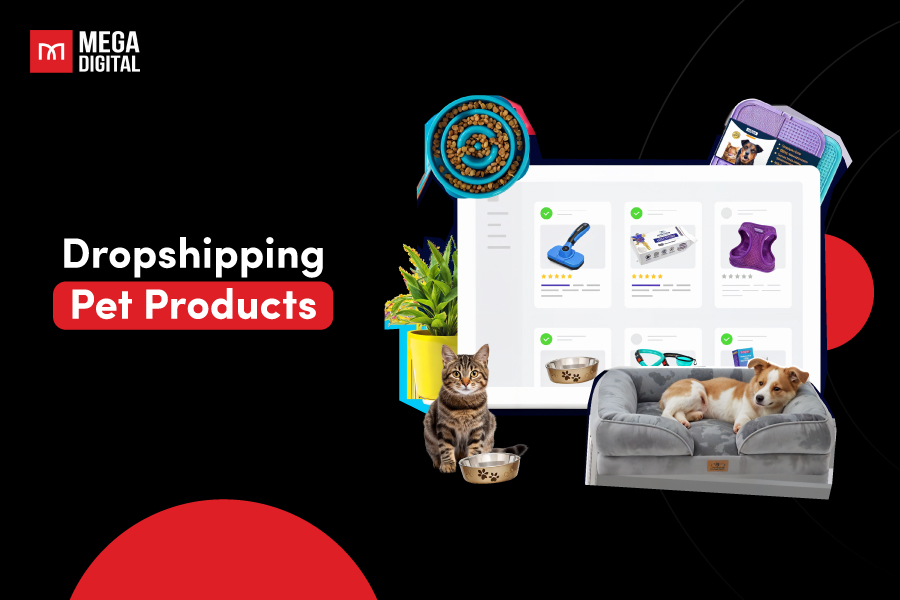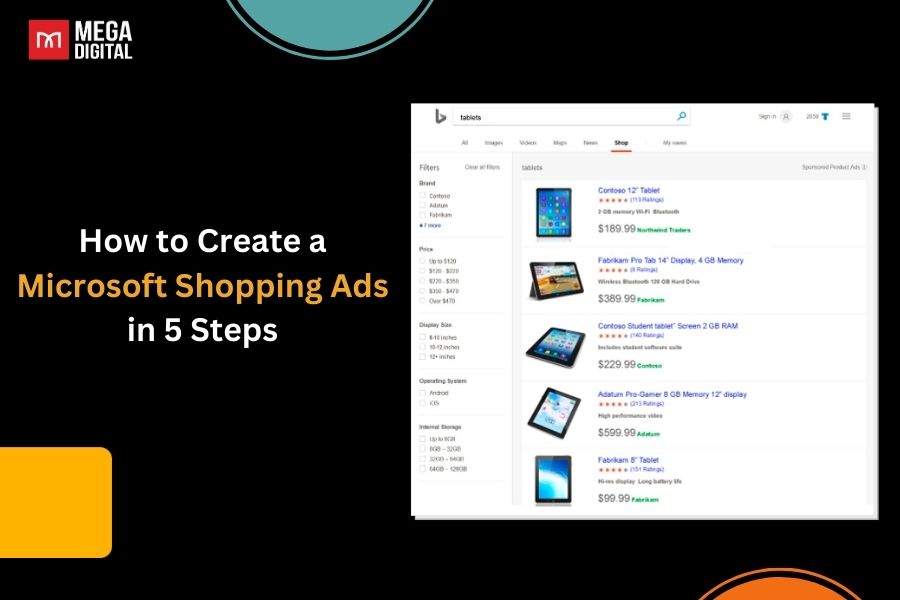If you’re considering using Google Ads to promote your digital products, you might be wondering exactly how to set up campaigns that not only attract attention but also drive conversions. In this article, we’ll explore these key questions, providing detailed insights and practical tips to help you optimize your strategy and enhance your Google Ads for digital product promotions.
What Types of Digital Products Can I Sell on Google?
Google Ads allows you to promote a wide variety of digital products, as long as they comply with Google’s advertising policies. Here are some types of digital products commonly advertised and sold through Google Ads:
- Software and Apps: This includes everything from productivity tools, antivirus software, educational apps, to mobile games. Software as a Service (SaaS) products are also commonly promoted through Google Ads.
- E-books and Digital Magazines: Authors and publishers use Google Ads to promote their e-books and digital magazines across various genres and niches.
- Online Courses and Educational Materials: Educational providers often use Google Ads to promote online learning materials, courses, webinars, and tutorials, ranging from academic subjects to skill-based training like photography or programming.
- Music and Audio Products: Independent artists, labels, and music producers can promote their music tracks, sound effects, or audio books.
- Digital Art and Graphics: Artists and graphic designers can sell digital artwork, illustrations, stock photos, and graphic design templates.
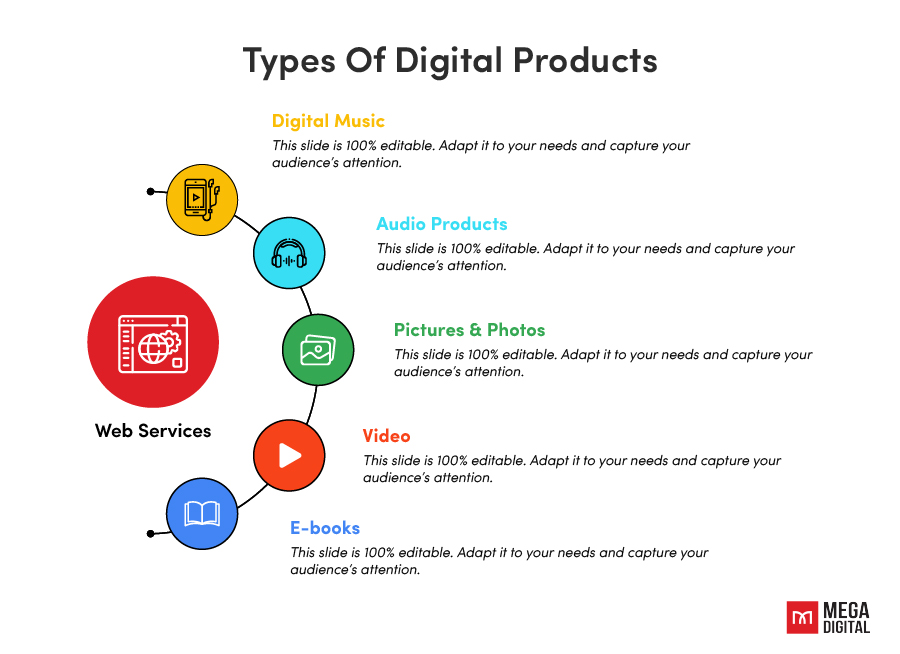
- Videos and Films: Filmmakers and content creators can promote their on-demand video content, including movies, documentaries, and instructional videos.
- Professional Services: Although not a digital product per se, many professionals use Google Ads to promote services that are delivered digitally, such as consulting, financial planning, or graphic design services.
- Templates and Tools: This includes website templates, PowerPoint templates, project management tools, or any kind of templates that help users in various tasks.
- Subscription Services: This can range from news websites, specialized content platforms (like niche research databases), to digital fitness platforms.
Why Use Google Ads for Promoting Digital Products?
Using Google Ads to promote digital products offers several distinctive advantages that can be more beneficial compared to other advertising platforms. Here are some key benefits that make Google Ads stand out:
Integrated Ecosystem
Google Ads is part of Google’s broader ecosystem, which includes YouTube, Google Play, and the Google Display Network. This integration allows for unique advertising opportunities across different media types and devices, providing a holistic approach that many other platforms can’t match.
Superior Search Intent Capture
Google is the most widely used search engine, handling over 90% of global search queries. This unparalleled reach into user search intent is a critical advantage. When users search for something specific, they have a high intent to engage or buy, which can lead to higher conversion rates compared to other platforms where users may not have a specific intent.
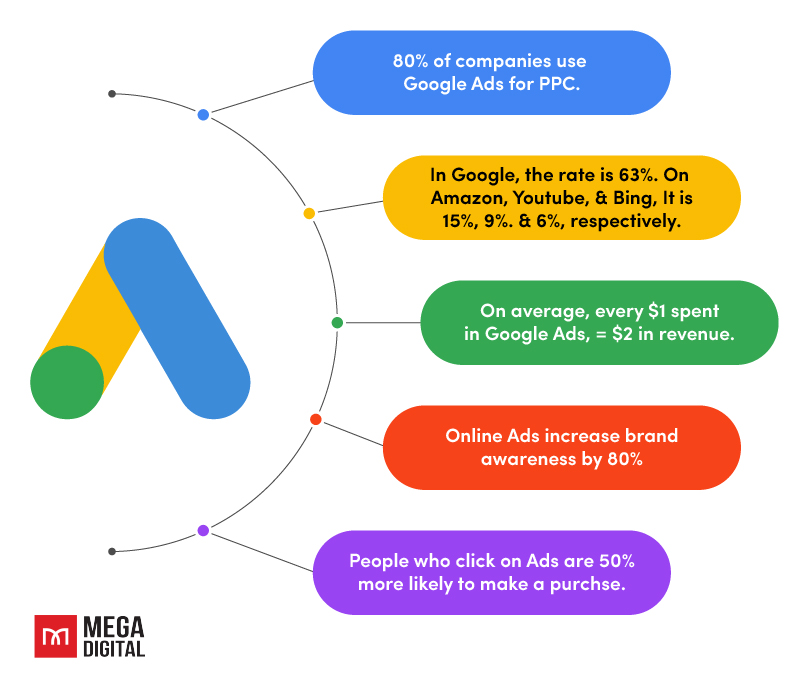
Profitability
Advertising digital products with Google Ads can be highly profitable because of repeat revenue. And online courses are the most profitable of them all. The industry will be worth over $200 billion by 2024.
Advanced Machine Learning
Google uses sophisticated machine learning algorithms to optimize ad performance automatically. Features like Smart Bidding and Responsive Ads allow for better optimization based on conversion data, something that’s often more advanced compared to what’s available on other platforms.
Estimated CPC Ranges for Digital Products on Google Ads
The Cost-Per-Click (CPC) on Google Ads can vary significantly depending on the type of digital product you are advertising. The CPC essentially represents how much you pay each time a user clicks on your ad.
Below, I’ll expand on the factors influencing these costs and detail the estimated CPC ranges for the most common types of digital products based on general industry observations.
1. Software and SaaS (Software as a Service)
- Estimated CPC: $2 to $6
- Factors Influencing CPC: Software and SaaS products often face high competition, especially in popular categories like CRM systems, educational tools, and business management software. The high value of a single conversion (due to subscription models) justifies the higher cost per click.
- Key Considerations: Targeting niche or very specific software solutions can sometimes reduce CPC as the competition may be lower for very specialized terms.
>>> Read more: Google Ads for SaaS: Best B2B Marketing SaaS Ads Guide
2. Ebooks and Digital Media
- Estimated CPC: $0.50 to $2
- Factors Influencing CPC: The cost here depends largely on the genre and demand. Popular genres like business, technology, or self-help might attract higher costs due to more advertisers targeting these keywords.
- Key Considerations: Using long-tail keywords associated with specific book titles or niche topics can often lower CPCs while maintaining qualified traffic.
>>> Read more: How to Use Google Ads for Musicians to Promote Music Videos
3. Online Courses and Education
- Estimated CPC: $1 to $4
- Factors Influencing CPC: This is a broad category that can include everything from university-level courses to informal personal development classes. CPCs generally rise with the level of course specialization and the earning potential associated with the course.
- Key Considerations: Specializing in areas with less direct online competition or offering unique selling points (USPs) such as certification or accreditation can enhance ad performance.
4. Digital Art and Creative Content
- Estimated CPC: $0.60 to $1.50
- Factors Influencing CPC: This category includes digital assets like stock photos, illustrations, and design templates. While there is significant demand, there are also many suppliers, which can help keep CPCs moderate.
- Key Considerations: Targeting specific types of creative content, such as niche graphic styles or unique artistic media, can differentiate your ads and potentially reduce costs.
5. Video Games and Mobile Apps
- Estimated CPC: $0.50 to $3
- Factors Influencing CPC: Gaming and apps can have a wide range of CPCs depending on the platform (iOS vs. Android), game genre, and target demographic. Popular genres like action or strategy games often have higher CPCs.
- Key Considerations: Highlighting unique game features or offering promotions (like free in-game items) in your ads can increase CTR and reduce overall CPC through improved Quality Scores.
So, here’s a table outlining over 15 types of digital products along with their estimated CPC ranges on Google Ads:
| Types of Digital Product | Estimated CPC |
|---|---|
| Software Solutions | $2.00 – $6.00 |
| SaaS Products | $2.00 – $6.00 |
| Ebooks | $0.50 – $2.00 |
| Online Educational Courses | $1.00 – $4.00 |
| Digital Art | $0.60 – $1.50 |
| Video Games | $0.50 – $3.00 |
| Mobile Apps | $0.50 – $3.00 |
| Digital Marketing Tools | $1.50 – $5.00 |
| Music Downloads | $0.30 – $1.20 |
| Stock Photography | $0.60 – $2.50 |
| Webinar and Online Conferences | $1.00 – $3.00 |
| Software Development Kits (SDKs) | $2.00 – $5.00 |
| Fitness and Wellness Apps | $0.80 – $2.50 |
| Graphic Design Templates | $0.50 – $1.50 |
| Financial Planning Tools | $2.50 – $6.00 |
| Cryptocurrency Trading Platforms | $1.00 – $4.00 |
| Podcast Subscriptions | $0.40 – $1.80 |
| Virtual Reality (VR) Content | $0.70 – $3.00 |
| Cloud Storage Services | $1.50 – $4.50 |
| E-Learning Platforms | $1.00 – $3.50 |
| Online Legal Services | $2.00 – $7.00 |
What Ad Format is Best for Digital Products?
To effectively promote digital products via Google Ads, focusing on the three most recommended ad formats can streamline your efforts and potentially yield higher conversions. Here’s a detailed look at these formats, highlighting which is generally the most effective for conversions:
#1 Search Ads
Most Recommended for Conversions.
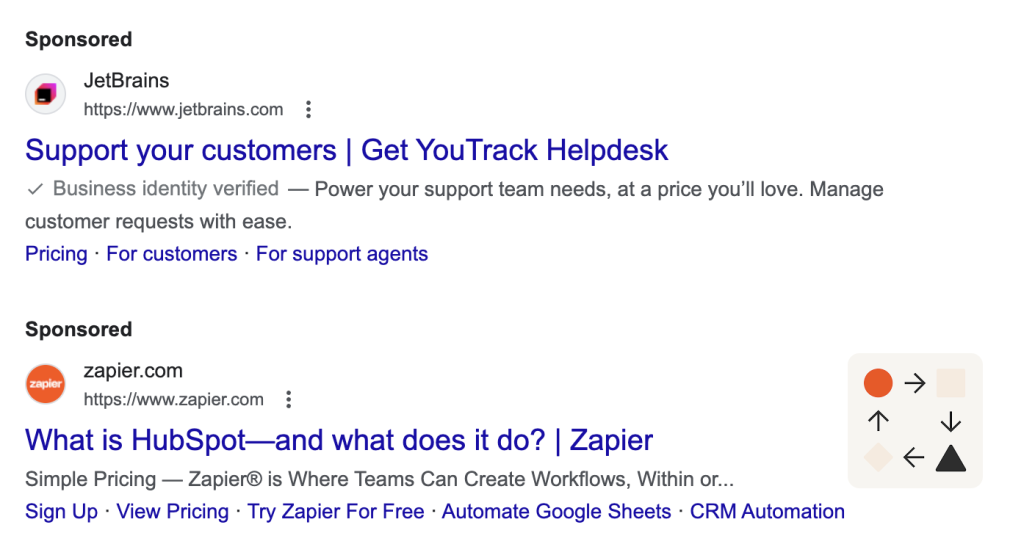
- Why: Search ads are highly effective for conversions because they target users at the moment they are actively searching for your product or a related query. This “high intent” targeting means that the users seeing your ads are already in a problem-solving or buying mode, which significantly increases the likelihood of a conversion.
- Best Practices:
- Use precise, relevant keywords that match your product offerings to capture the right audience.
- Craft concise, compelling ad copy that includes a clear value proposition and a strong call to action (CTA).
- Optimize your landing pages to ensure they are directly relevant to the ad’s promise, which improves user experience and conversion rates.
#2. Display Ads
Great for Awareness and Retargeting, Good for Conversions.
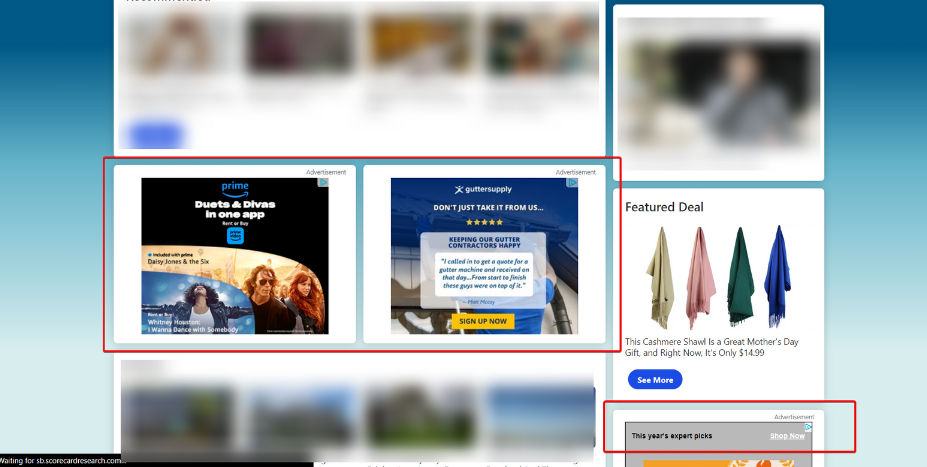
- Why: Display ads are less targeted compared to search ads in terms of immediate purchase intent, but they are excellent for building awareness and retargeting potential customers who have already shown interest in your product. When used for retargeting, display ads can effectively bring users back to complete a purchase, thus aiding in conversion.
- Best Practices:
- Use eye-catching visuals that clearly communicate the digital product and its benefits.
- Target retargeting audiences who have previously visited your site but did not convert.
- Include offers like free trials, discounts, or demos to entice clicks and conversions.
#3. Video Ads
High Engagement and Good for Demonstrating Product Use.
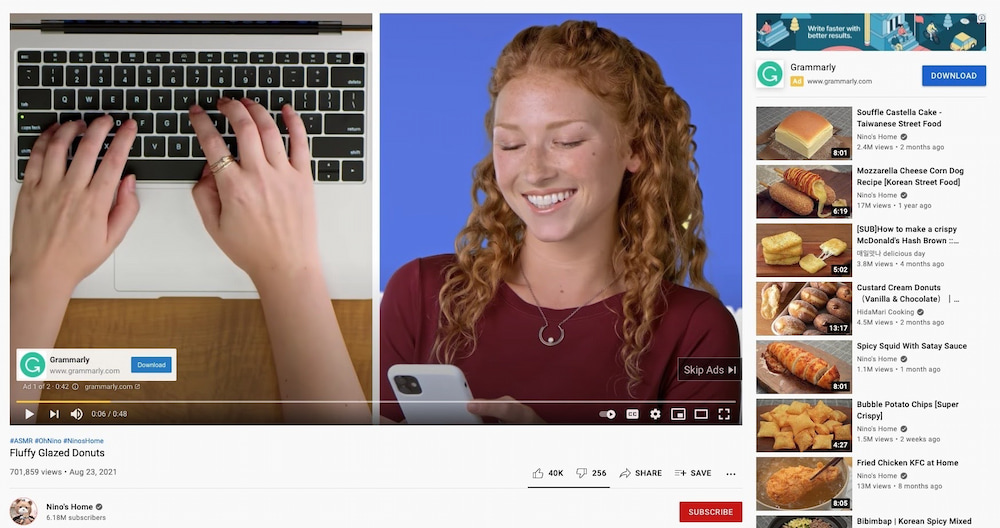
- Why: Video ads can be particularly powerful for products that require demonstration or for complex solutions where seeing the product in use helps clarify its value. These ads tend to engage users more deeply than text or image alone and can be very effective in driving conversions, especially when targeted correctly.
- Best Practices:
- Create high-quality, informative videos that are engaging and concise. Focus on how the product solves problems or adds value.
- Include a clear, compelling call to action at the end of the video, such as signing up, learning more, or making a purchase.
- Use YouTube’s in-video overlay ads to place a direct CTA that can take viewers straight to your product page.
Most Recommended Overall for Conversion: Search Ads
While all three formats have their strengths, search ads typically provide the highest direct conversion rate due to their ability to target users at the exact moment they demonstrate intent. This immediacy and relevancy are key drivers in converting interest into sales, making search ads a go-to choice for most digital product campaigns focused on achieving immediate sales or actions.
How to Run Google Ads for Digital Products?
Running Google Ads for digital products can be a great way to reach new customers and boost sales. Here’s a breakdown of the key steps involved:
Before you start:
Step 1: Lay the Groundwork
- Refine your product: Ensure your digital product is well-priced, has clear value propositions, and solves a specific problem for your target audience.
- Landing Page Optimization: Design a high-converting landing page that effectively showcases your product’s benefits and guides users towards a purchase.
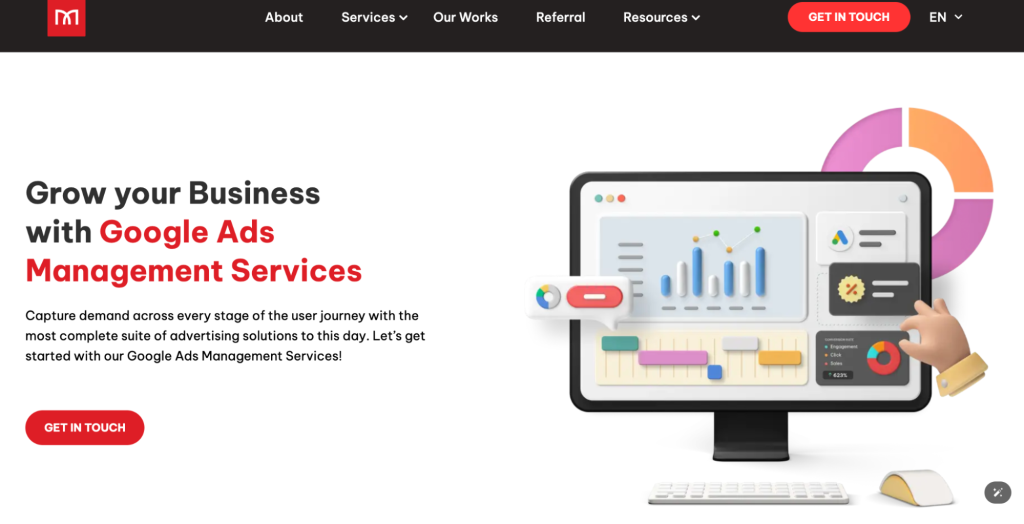
- Build Brand Credibility: Establish trust with potential customers through testimonials, social proof (e.g., reviews, case studies) and high-quality content that positions you as an authority in your field.
Step 2: Set up your Google Ads Campaign
- Campaign goals: Determine your specific goals. Do you want more website traffic, app downloads, or direct sales?
- Campaign type selection: Choose the campaign type that aligns with your goals. Here are some options for digital products:
- Search Network campaigns: Reach users actively searching for keywords related to your product.
- Display Network campaigns: Place visually appealing text, image, or video ads across a vast network of websites.
- Video campaigns: (For online courses) Showcase your product information like features and pricing on YouTube.
- Targeting: Define your target audience by demographics, interests, online behavior, and buying habits.
- Budget and bidding: Set a daily or total budget for your campaign and choose a bidding strategy that optimizes your ad spend for conversions.
- Ad creation: Craft compelling ad copy that highlights your product’s unique selling points and includes a clear call to action.
Step 3: Optimize your campaign
- Monitor performance: Track key metrics like impressions, clicks, conversions, and cost-per-acquisition (CPA) to measure your campaign’s effectiveness.
- Make adjustments: Regularly analyze your data and make adjustments to your targeting, budget, bids, and ad copy to improve performance and maximize ROI.
Additional tips from Mega Digital:
- Test different ad variations: Experiment with different headlines, descriptions, and visuals to see what resonates best with your audience.
- Remarketing: Use remarketing campaigns to target users who have previously interacted with your website or ads.
- Use Google Ads conversion tracking: Set up conversion tracking to measure how many clicks on your ads actually lead to sales or downloads.
Wrap up
Start boosting your Google Ads for digital products by getting to know your audience well—what drives them, and what they’re searching for. This understanding will shape a more personal and effective campaign.
Lean into keyword research to find those golden phrases that will lead eager customers right to your doorstep. Craft ads that speak directly to their needs, and don’t skimp on polishing your landing pages—they’re crucial for turning curiosity into conversions.
And remember, the digital marketing world is always on the move, so stay adaptable. Embrace this journey, engage with your audience, and watch your digital products thrive in the marketplace of Google Ads. Let’s get those clicks turning into customers!







